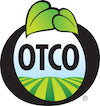U.S. National Parks Set Sights on Healthy Food

If you visit the nation’s National Parks for unadulterated majestic beauty and serenity, you’re not alone. Millions of people trek to the U.S. National Parks every year. But park concessions have long been the antithesis of their surroundings: serving unhealthy processed foods. That’s all about to change.
“We want the food to be as memorable as the scenery,” Kathy Kupper, public affairs specialist for the National Park Service, told Specialty Food News.
Over the last several years, the Park Service’s Healthy Parks Healthy People U.S. initiative has helped the National Parks set healthy food guidelines for its concession areas, with an emphasis on local and sustainable food options.
“Under the guidelines, at least 30 percent of a restaurant’s beverage selection must have no added sugar; half servings or reduced portion sizes must be offered when possible; and better-for-you products should be placed more noticeably in grab-and-go outlets to encourage healthier choices,” reports Specialty Food News. “The standards have been applied on a voluntary basis with existing concession contracts, and are required with new or renewing contracts.”
While many people make park-going a picnic kind of stay, bringing in their own food and beverages, the concession areas actually do a huge amount of business, serving more than 23 million park-goers every year. The National Park Service manages more than 250 foodservice outlets in 75 parks.
Parks like Muir Woods, which are nearer to urban environments where it’s easier to access fresh and healthy food have been some of the first to adopt the shift. “Muir Woods in Marin County, north of San Francisco, serves cage-free egg salad on organic nine-grain bread,” reports Specialty Food News. “Kiosks along the National Mall in Washington, D.C., offer freshly made sandwiches and salad options. Wilderness parks like the Grand Tetons in Wyoming, however, aren’t beholden to the guidelines and may not offer as many choices.”
And the local trend is on the rise too. According to the park services, there is a big commitment to support regional growers and producers. “Shenandoah National Park in Virginia now sources 90 percent of all menu items within 200 miles, and Colorado’s Mesa Verde National Park purchases items like corn tortillas, prickly pear red pepper jelly, craft beer, and freshwater trout from local vendors to provide visitors with a taste of the region,” Specialty Food News explains.
“People want variety, a good value, and fresh and healthy ingredients,” Brian Stapleton, vice president of food and beverage for Aramark, a provider for the parks told Specialty Food News. “Sustainable cuisine is also becoming more sought after.”
Image via yellowstoneNPS
Leave a comment
Comments will be approved before showing up.


